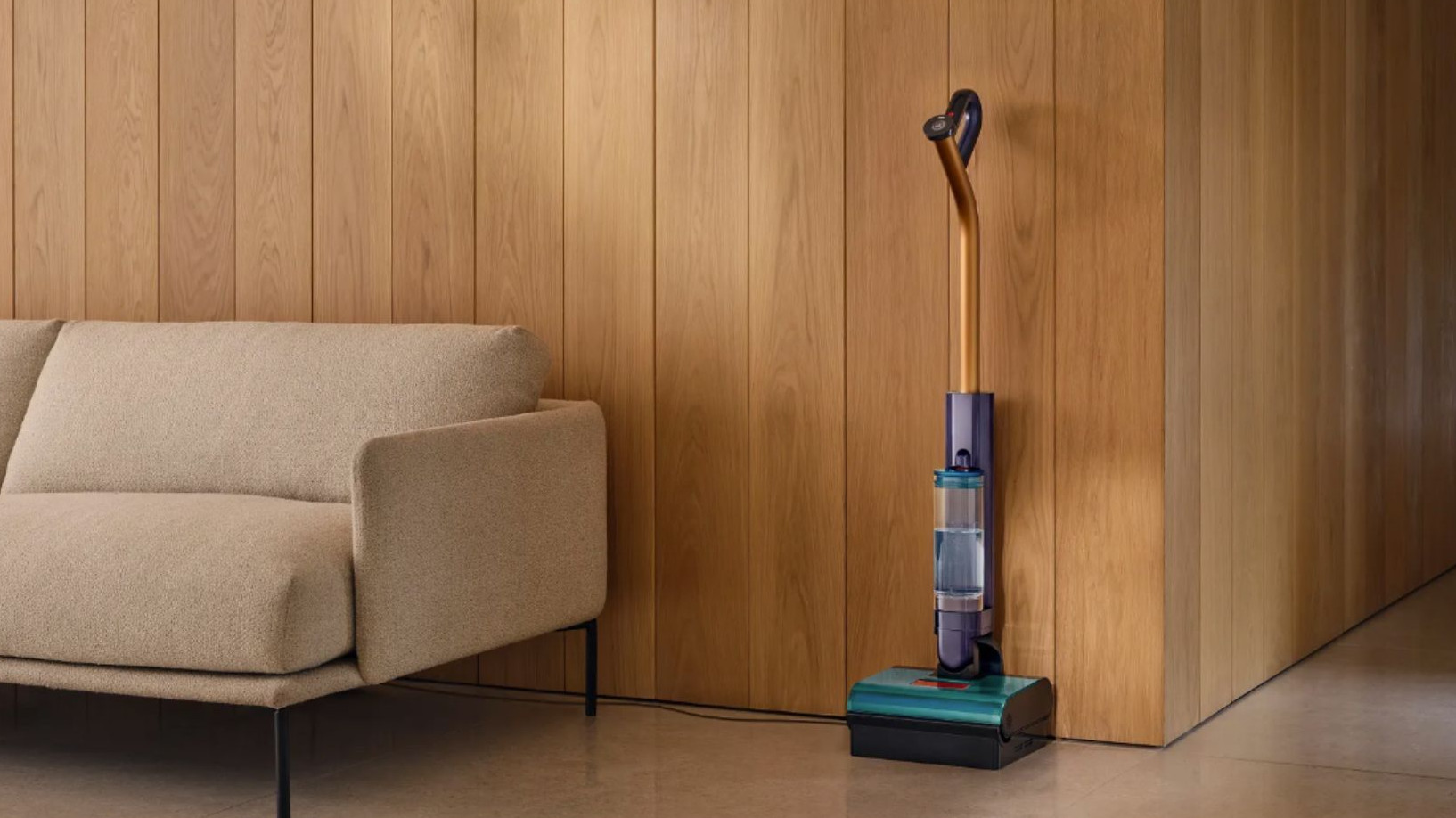Best robot vacuums in Australia 2025 tested and rated
These are the best robot vacuums based on our testing of the top models from multiple brands
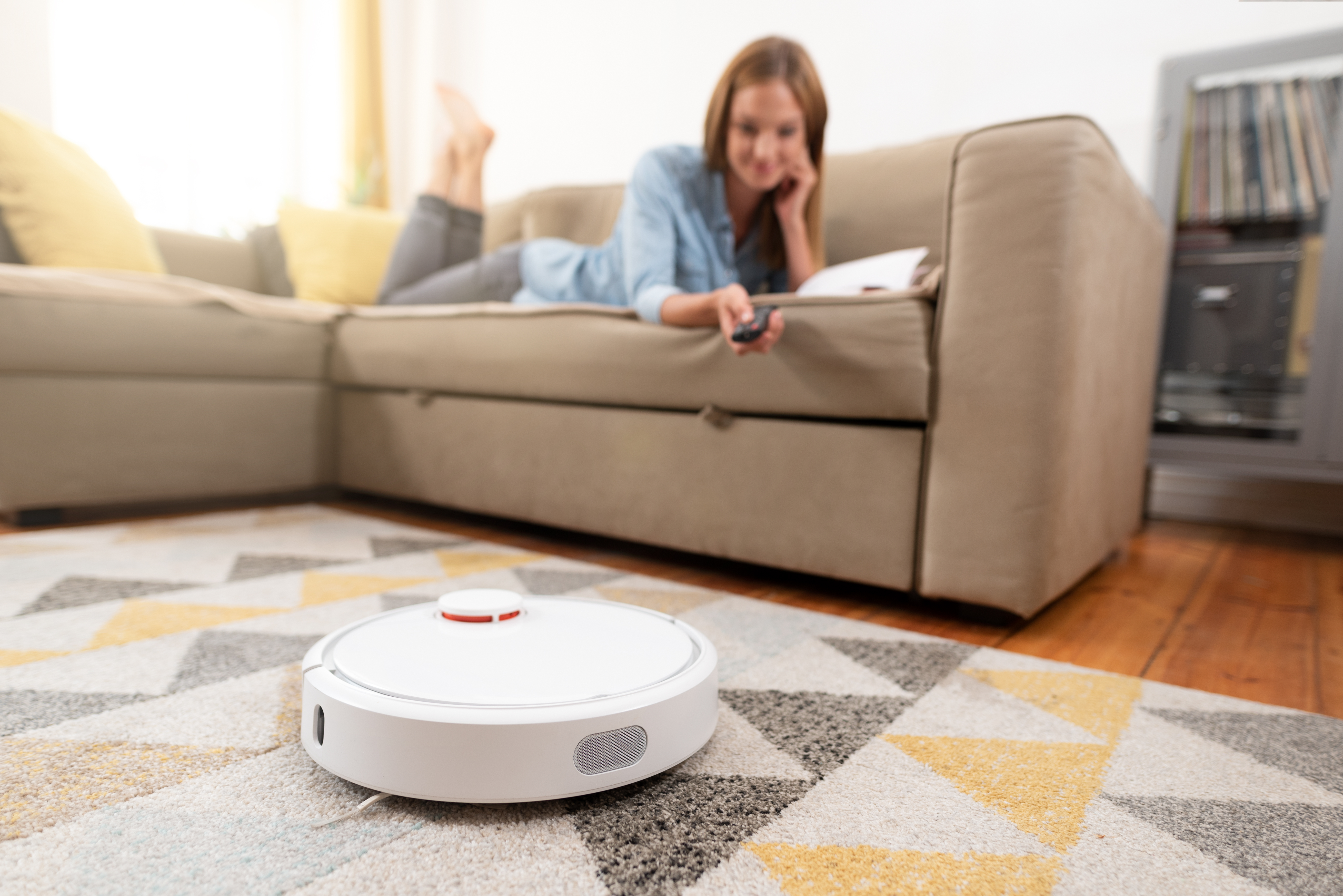
It can be hard to keep our houses clean sometimes, especially in Australia, where we're trailing in dust, sand and mud from across our sunburnt country. If you're looking for an extra hand, one of the best robot vacuums may be able to help you clean your home with ease.
Robot vacuums tend to come in similar shapes and sizes, but prices can range substantially. But how do you determine which robot cleaning companion is the best for your home? We've tested a range of models to help you decide.
We've spent an exhaustive amount of time testing robot vacuum cleaners to see which models offer the best performance of the bunch. Each robot vacuum cleaner had to collect measured amounts of kitty litter, Cheerios and pet hair from hard and carpeted floors, to see how it handled varying sizes and types of debris.
After that, we considered the accessibility of the design, the overall ease of use and, of course, the navigation's effectiveness. After all, a robot vacuum is going to be next to no help if it can't make its own way around your home. If the model came with a mopping function, we gave that a go too, making sure we checked the performance quality on hardwood floors.
Additionally, any special features were taken into account too, including everything from self-emptying bases to object recognition capabilities and dock connectivity.
Our commitment to testing every model to this extent was time-consuming, but it was well worth the fuss to provide you with a comprehensive list of the best robovacs. Whether you're shopping on a budget, or want a vacuum that runs quietly, we've got you covered. Here are the best robot vacuums of 2024:
The best robot vacuums you can buy today
Why you can trust Tom's Guide
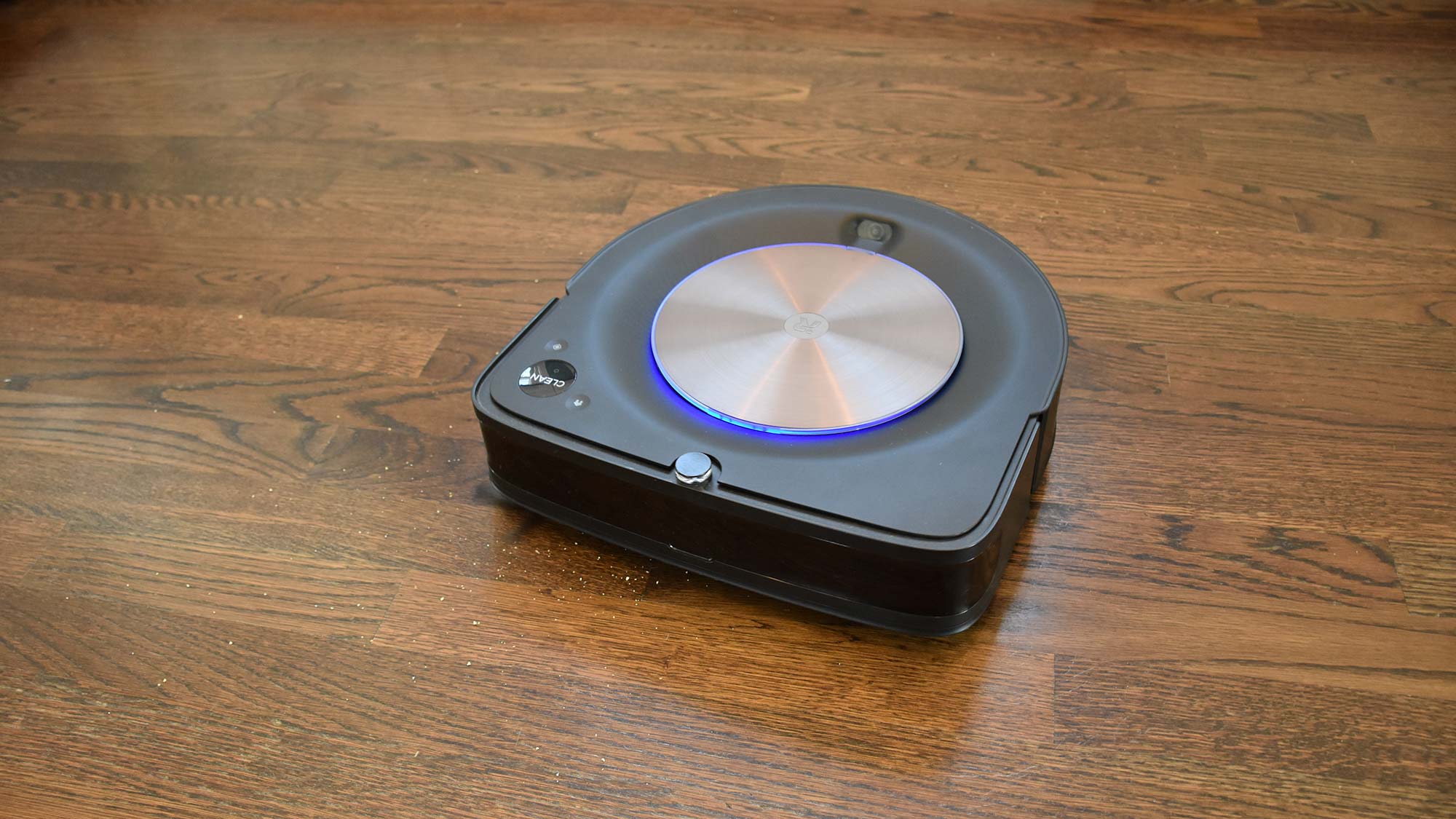
Specifications
Reasons to buy
Reasons to avoid
iRobot's Roomba s9+ is one of the smartest and most thorough robot vacuums we've tested, which is why for us, it's the best robot vacuum overall. It has advanced mapping, so it can record and remember a blueprint of multiple floors of your house after just a few trips; you can then specify individual rooms, and tell the s9+ to clean specific rooms on specific days. We suggest scheduling it for when you're out of the house, as this is admittedly a noisy robot vacuum, particularly on hardwood floors.
However, with an average pick up score of almost 97 achieved during our testing, it's a capable vacuum on both hard floors and carpet. We noticed that it's better at picking up pet hair and kitty litter compared to Cheerios — this is usually the other way around. So it's actually better for smaller debris.
The Roomba s9+ also comes with a self-emptying charging base; while you'll have to purchase replacement bags for this base, you will only have to empty the container every 30 days, which will save you a lot of time versus emptying the onboard dustbin.
It you want to drop even more cash (the s9+ as a standalone unit is already pretty expensive at around AU$2,800), the s9+ can also talk with the company's Braava jet m6 robot mop, with the two working as a team, vacuuming floors, followed by a mop, which is pretty neat. Ultimately, this robot vacuum comes at a steep price, but it leaves little room for improvement.
Read our full iRobot Roomba s9+ review.
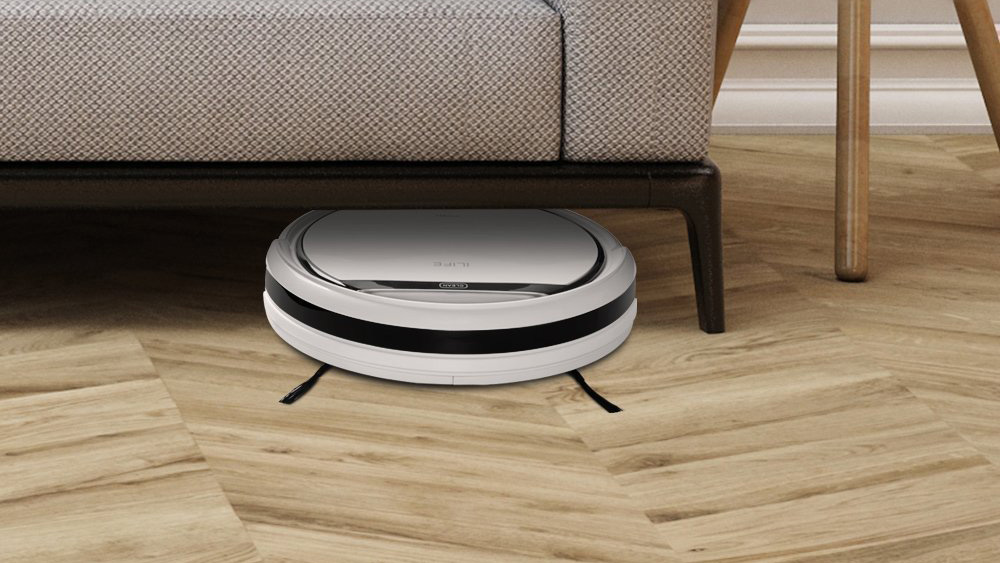

Specifications
Reasons to buy
Reasons to avoid
The iLife V3s Pro is the best robot vacuum you can get for less than AU$400. Period. Despite its low price, the V3s Pro consistently outperformed other robot vacuums that cost three times as much. It picked up nearly all of Fido's fur in our lab tests — making it the best robot vacuum for pet hair — and was also good in our at-home tests, too. It was about average in terms of noise compared to the other robot vacuums on test, with 64.1dB.
There are a few caveats when purchasing a robot vacuum this cheap, though. For starters, the iLife V3s Pro is slow, taking more than 90 minutes on average to clean our test space — others took less than 30 minutes. Also, it can’t be controlled from your smartphone, so you have to use the included remote control, and you can't connect it to Alexa or Google Assistant to turn it on or schedule cleanings. But, if these are #FirstWorldProblems you can live with, then you'll be pleased to know the V3s Pro its great at doing the one thing it needs to do well, and that's picking up debris.
For this price, its downsides are tradeoffs we’re willing to make. That's why it's also one of the best cheap robot vacuums.
Read our full iLife V3s Pro review
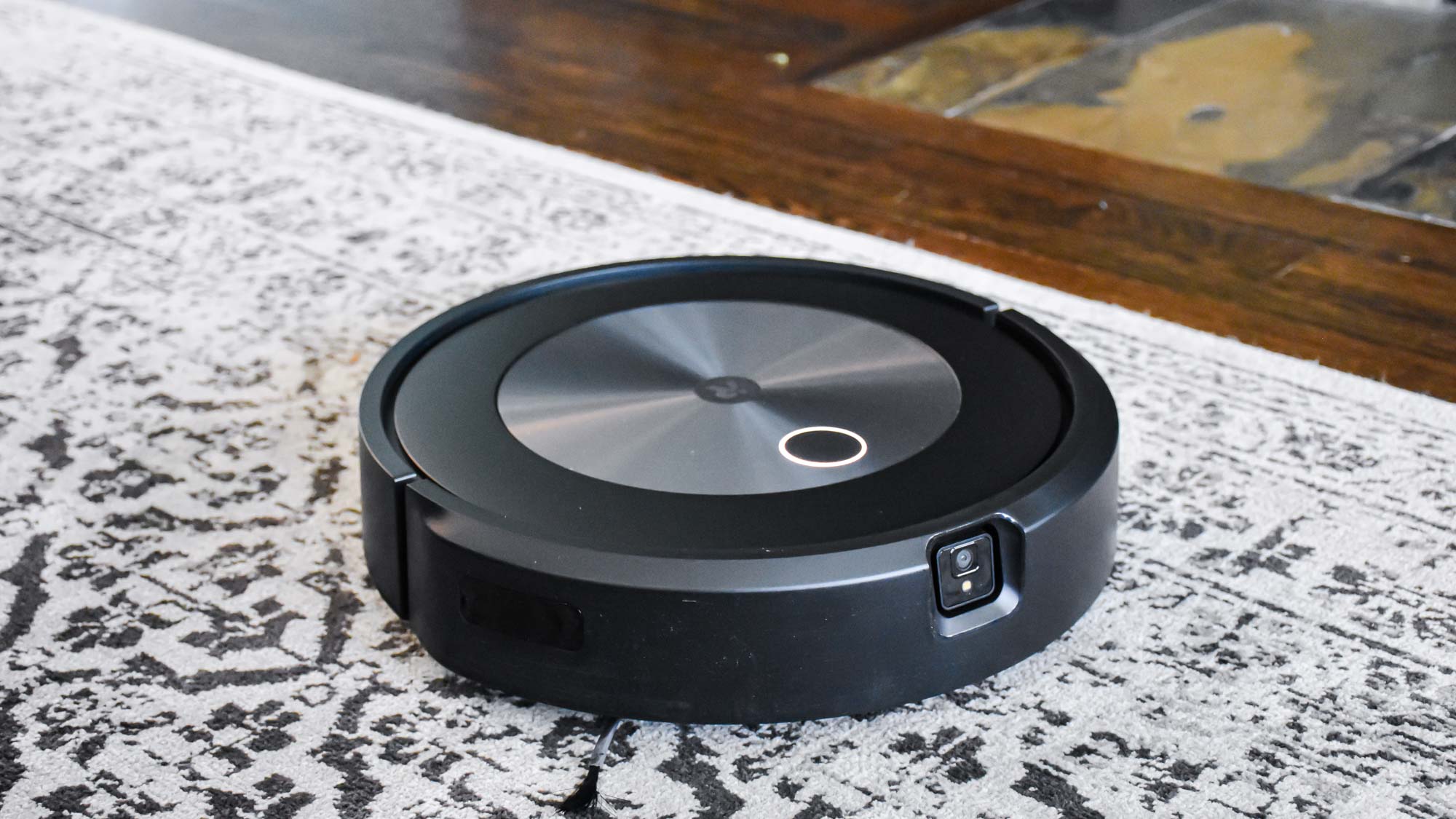
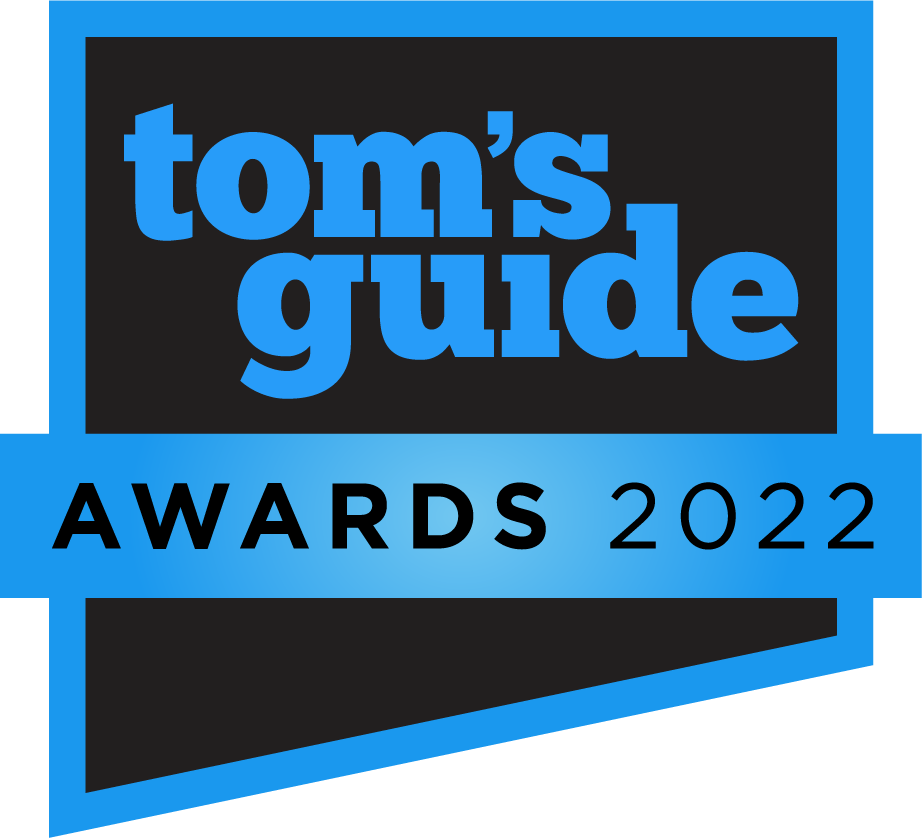
Specifications
Reasons to buy
Reasons to avoid
iRobot’s newest offering, the Roomba j7+ is one of the best Roombas because of its obstacle avoidance technology. With this, it can essentially detect everyday objects, such as cables and socks and steer clear of them. The main benefit of this feature is the bot’s ability to avoid pet poop. In fact, iRobot is so confident in the Roomba j7+’s intelligence that it’s introduced the Pet Owner Official Promise (P.O.O.P), whereby iRobot will replace any j7+ that fails to avoid solid pet waste. This robot vacuum is constantly learning with every run too, making it one of the smartest we’ve seen. That's why it earned a Tom's Guide 2022 Award for Best robot vacuum.
The j7+ comes with a cleaning base which is hard to fault. It can hold up to 60 days of debris and looks easy on the eye compared to other bases — plus it’s more compact too. This robot vacuum scored well for collecting large debris, such as cereal and kitty litter, collecting 98.33 and 94.6% respectively. We’ve seen better performances on pet hair, but the score was still a respectable 82.5%. Ultimately, this is a great investment if your pets are prone to accidents and you want to avoid further mess.
Read our full iRobot Roomba j7+ review.
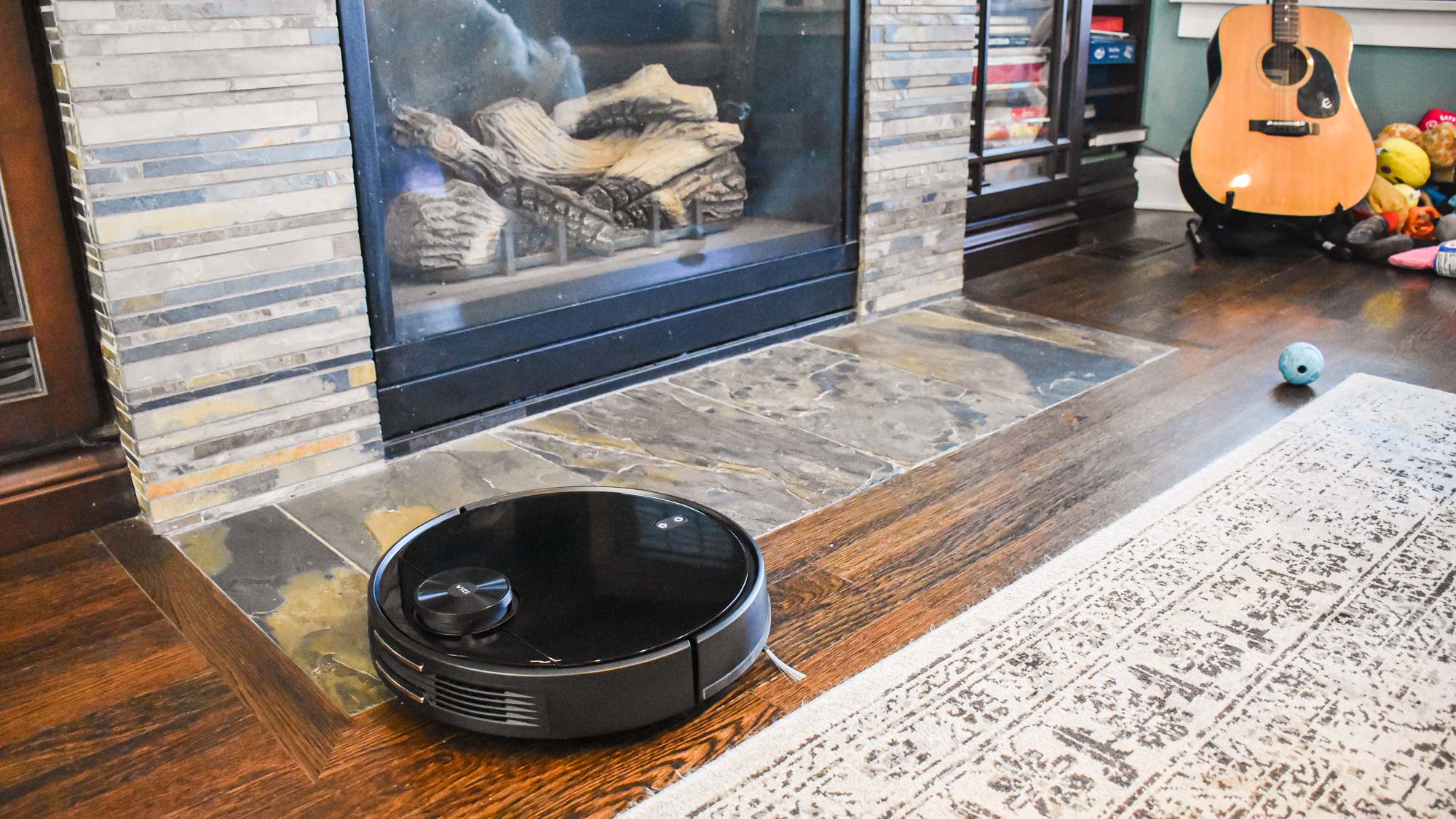
Specifications
Reasons to buy
Reasons to avoid
This new robot vacuum cleaner from Wyze makes our list because of its exceptional performance on hard floors. When we put it to the test, it picked up 100% of pet fur and cereal — it just missed a perfect score, as it collected roughly 97% of kitty litter.
On top of this, the Wyze app is easy to navigate and intuitive to use. It also comes with useful features, such as a location-based trigger. In our opinion, the Wyze Robot Vacuum is a much more advanced option than the Eufy G30 Edge, which comes at a similar price. This is because you get room division as well as no-go zone options.
Read our full Wyze Robot Vacuum review.
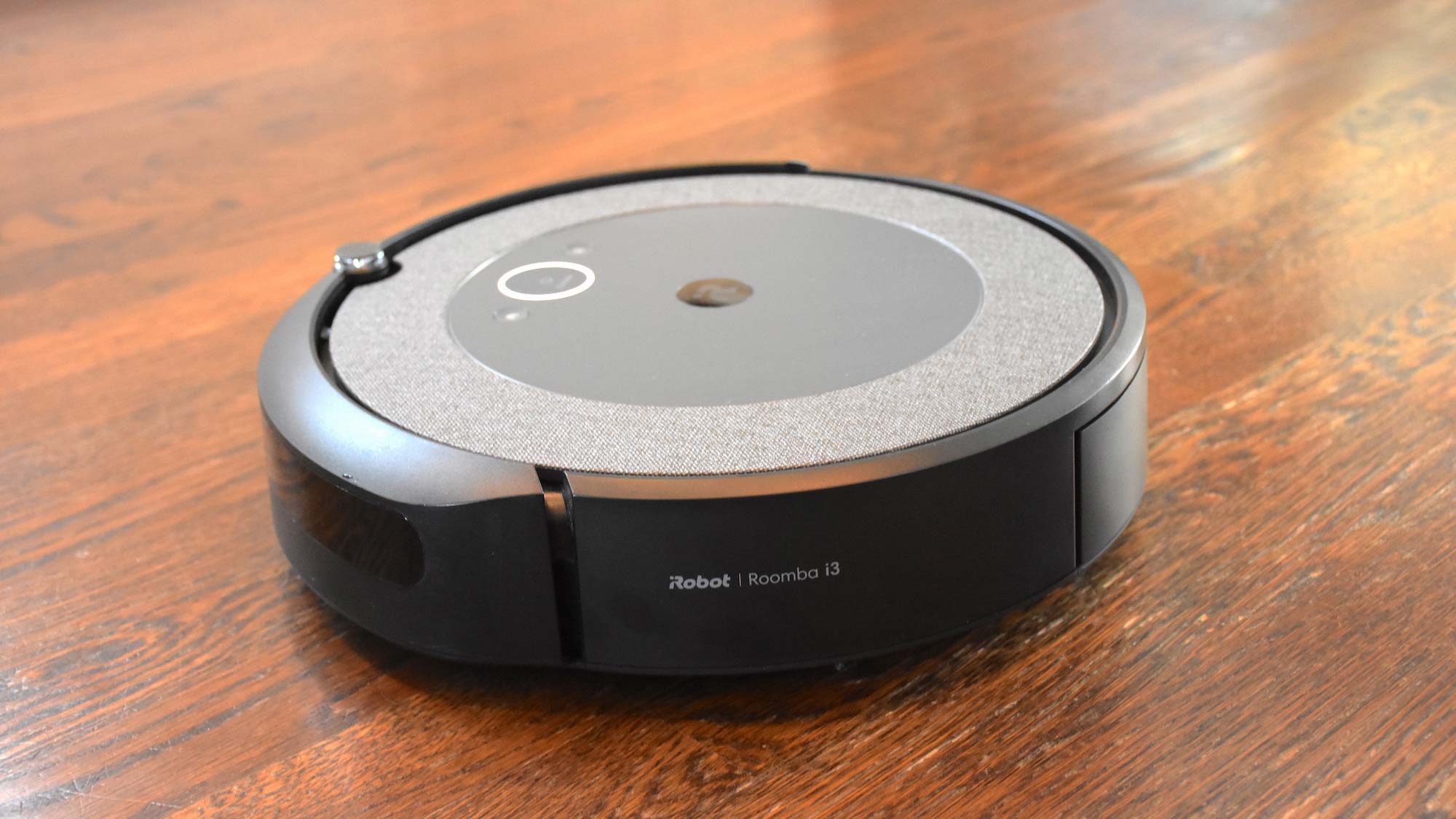
Specifications
Reasons to buy
Reasons to avoid
The iRobot Roomba i3+ is the company's least-expensive robot vacuum with a self-cleaning feature. Thanks to the self-emptying base, you don't have to dump out its contents after every run—very convenient. The Roomba i3+ excelled at most of our tests, except for picking up kitty litter on carpet, for which it scored a low mark of 58. Otherwise, its performance was strong, so this area was all that really let it down.
The Roomba i3+ can be controlled via an app as well as with Alexa and Google Assistant, so you can create a schedule and connect it to smart home devices. Unlike the more expensive Roomba i7+ and s9+, though, the i3+ can't be directed to map individual rooms. Overall though, we really liked its performance.
Read our full iRobot Roomba i3+ review.
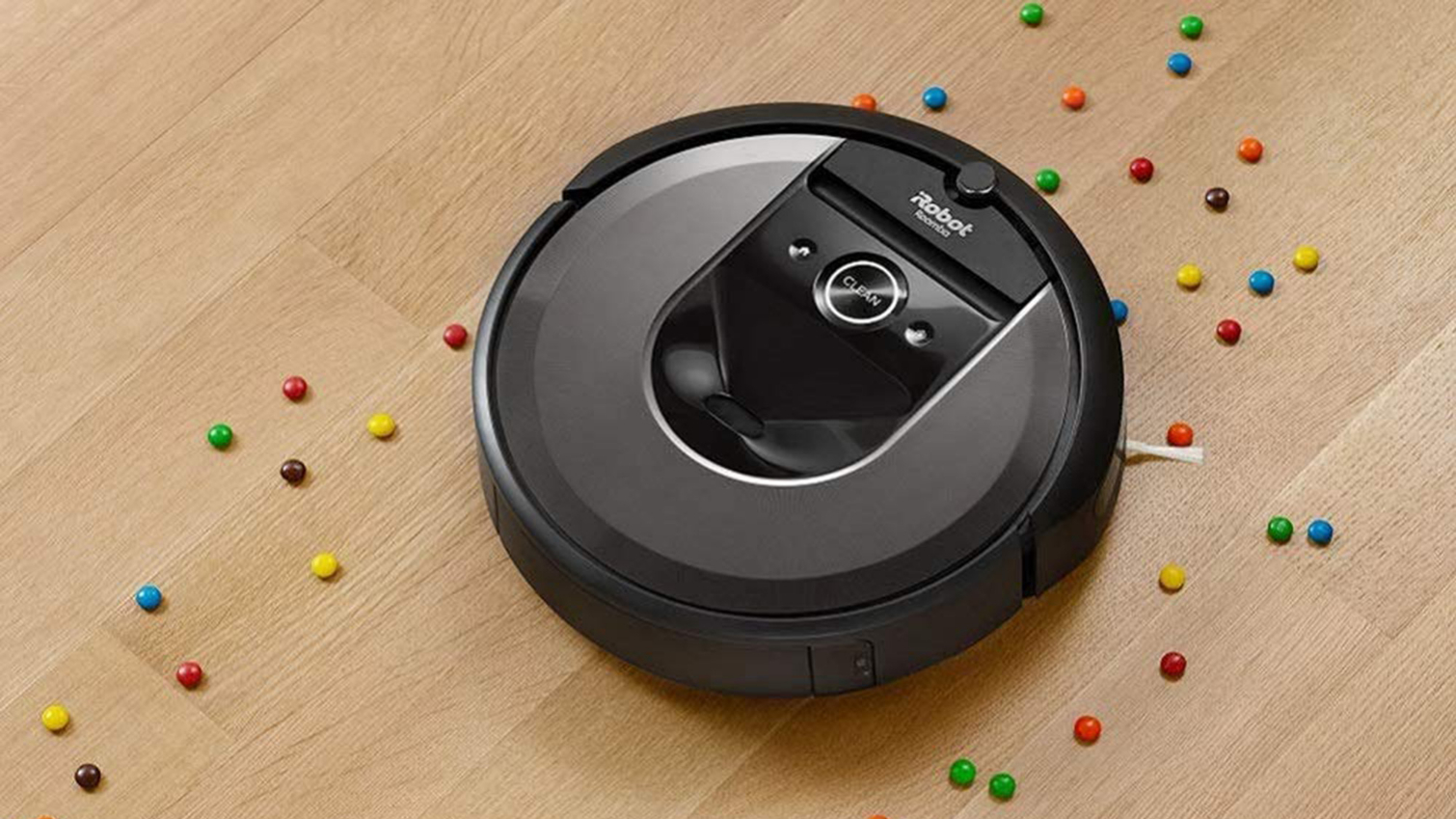
Specifications
Reasons to buy
Reasons to avoid
iRobot's Roomba i7+ makes our best robot vacuum list because it has a base with its own dustbin, so you can go multiple cleanings without having to empty out the bin. It edged out the Shark Ion R85 on our pet hair test, picking up just over 90 percent of all the fur on both hard floors and carpet. It was slightly quieter than the average from our tests as well, with a reading of 62.6dB.
It has a number of other features, such as the ability to map multiple floors and create virtual walls. The Roomba i7+ is also fast, finishing a cleaning run in less than 20 minutes. Now that iRobot has released the Roomba s9+, the Roomba i7+ has come down a bit in price, but it's still just as effective at cleaning.
Editor's Note: iRobot has issued a warning for Roomba i7+ owners. Some Clean Base units can malfunction if liquid gets into the bottom of the clean base. iRobot has sent emails and notifications to units that could be affected, and will send a replacement power cord or docking station if necessary.
Read our full iRobot Roomba i7+ review.
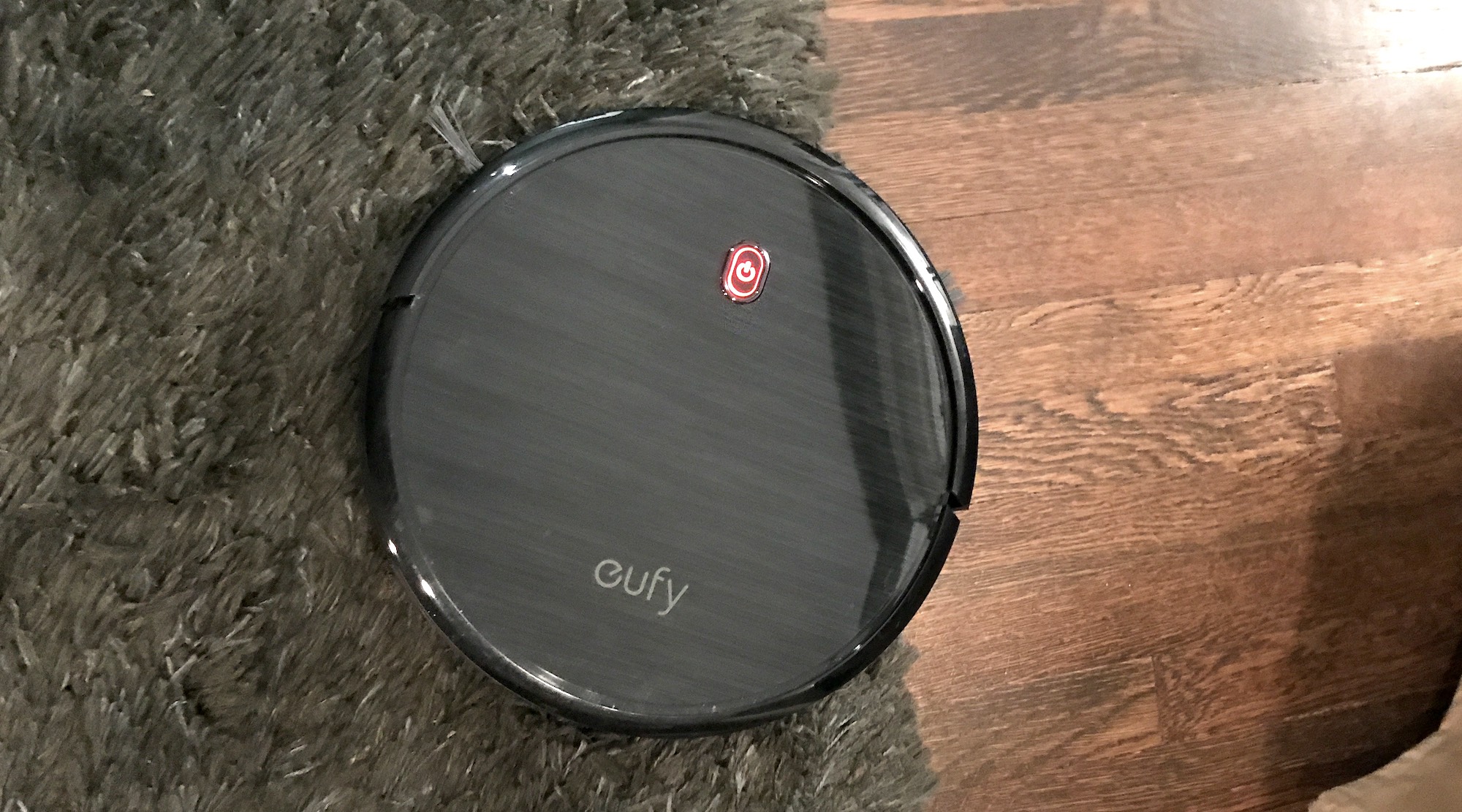
Specifications
Reasons to buy
Reasons to avoid
One of the trickiest areas to clean is under furniture; but thanks to its low 2.85-inch profile, the Eufy Robovac 11s can go where other robot vacuums can't, and gets those dust bunnies lurking under your couch. With an RRP of AU$399, it's affordable, and it's also happens to be quieter than most (but not all) other robot vacuums, reading just 62.5dB in our tests.
While it's not a "smart" robot vacuum, meaning it can't be controlled via an app, the S11 does come with a remote, which made it easy to control. Performance was pretty good for the price, as it picked up nearly 88 percent of all debris; it was less effective with pet hair though, picking up just 67.5 percent. It took its time to reach this result however, needing between 55-100 minutes to navigate our test areas. We also found that emptying the 11s resulted in a little cloud of dust. The 11s also had a propensity for getting stuck on rug tassels as well as shag carpet; it wasn't smart enough to avoid those obstacles. Still, it's a capable and affordable robot vacuum — not one for those with pets though!
Read our full Eufy Robovac 11s review.
How to choose the best robot vacuum for you
Before you start shopping for a new robot vacuum, you should consider what you need from it and how much you’re happy to spend. You will need to decide on the following:
- How much you’re willing to spend.
- The size of the space you want to clean.
- If you need a vacuum to clean up pet hair.
- If you want to control the vacuum using your smartphone.
Most robot vacuum cleaners will fall into two categories: Budget models, which are non-smart and cost around AU$400 or less, and smart models which cost upwards of AU$700. Budget models can be just as effective at cleaning as smarter options, but they’re not as intelligent and generally will bump into walls to find their way around. Budget models can also take much longer to clean because of their random cleaning pattern. For instance, a 15 x 15 foot room can take over an hour for a budget robot vacuum to navigate.
Premium models come with sensors which they use to map out and remember the room before cleaning. Because of this, their cleaning route is much more efficient — some of the best robot vacuums we’ve seen can clean the same space in just 10 minutes by comparison. Premium models naturally come with other useful features too, such as Wi-Fi connectivity, Alexa and Google Assistant compatibility, and the ability to clean individual rooms. Premium models can also feature self-emptying bases, which really add to the whole convenience factor, but as a result, will add a hefty sum to the price tag. Before you purchase, you should ask yourself: are robot vacuums with self-emptying bases worth it?
How to clean your robot vacuum
Forgetting to clean your robot vacuum is one of the 9 vacuum cleaner mistakes you’re probably making.
Because robot vacuums are designed to clean, most of us forget that these too need regular maintenance. They have surprisingly small bins (some less than 400ml) and so, unless you’re lucky enough to own a self-emptying model, these will need emptying after each run. On top of this, it’s good practice to cut free any hairs which have tangled in the rotating brush as well as clean the filters. Some brands such as Eufy, iLife and Roborock will provide a cleaning tool which can help with these tasks. The filters will need replacing as well — you should refer to your manual for guidance on how often to replace and where to buy.
If you do not empty the bin or check for tangled hairs regularly, it will affect the performance of the robot vacuum. In fact, a full bin will result in it dragging any mess around the floors rather than picking it up.
If you own an app-connected robot vacuum, you might also get maintenance guidelines and reminders for when it’s time to clean. Some even feature replacement schedules so you don’t need to make a note in the diary!
Features to look out for
- Self-emptying — This feature is available on more premium models. When the robot vacuum’s dustbin is full, it will return to its charging dock to ‘self-empty’. This is then stored in the dock until this larger bin is full and needs emptying, which you will need to do. Self-emptying models are great for those who suffer from allergies as the dust is released into the air less often.
- Wi-Fi connectivity — Most robot vacuums can connect to your smartphone via Wi-Fi, but some lower-end models don’t have this option. It allows you to control and monitor your robot vacuum from your phone and gives you access to all sorts of additional features, depending on the model.
- Hybrid models — Some hybrid models exist which can both vacuum and mop. These tend not to perform as well as dedicated machines, but if it’s what you want, the Roborock S7 mentioned above is the exception.
- Mapping — Some robot vacuums can map-out your home using sensors, so they can remember any obstacles, such as the stairs. The map can be displayed on your phone if the robot vacuum has Wi-Fi connectivity, and using this it can plan out the best cleaning path, rather than moving randomly.
- No-go zones — If you have the mapping technology, some allow you to set no-go zones if there’s certain areas you want to avoid, such as your pet’s food bowls or an expensive rug.
- Targeted rooms — Similar to no-go zones, some also let you set targeted rooms, if you only need to clean a particular area.
- Multiple floors — Mapping can sometimes also cover multiple floors, which can be useful if you live on more than one level.
- Scheduling — This is quite a common feature for robot vacuums. By connecting with your smartphone, you can schedule when you want it to clean, be it daily, weekly or when you’re not at home.
- Remote control — Some entry level robot vacuum cleaners come with a remote control rather than Wi-Fi connectivity. It doesn’t give you as many options, but you can still control it hands-free using this.
- Battery life — Battery life is important to consider. If you’re interested in a model which comes with a base, it can self-charge between runs. However, if the model you’re looking at needs to be manually plugged in, you might come home to a half-finished job.
- Dust capacity — The smaller the dustbin, the faster it will fill. Look for a minimum of 400ml, unless it self-empties of course! Self-emptying models tend to come with vacuum bags in the charging base, whereas dustbins on the robot vacuum themselves tend to be bagless. For more info on bagged vs. bagless vacuums, check out our guide.
Robot vacuum test results
Here's the table on which robot vacuums are best at picking up dirt and pet hair. Note that while all of the robot vacuums were tested by picking up the same material on the same surfaces, those with an asterisk were tested in a 15 x 15-foot square, whereas the other models were tested in a 5 x 5-foot square.
| Header Cell - Column 0 | Overall | Pet hair | hardwood | carpet | pet hair hardwood | pet hair carpet |
|---|---|---|---|---|---|---|
iLife V3s Pro* | 97 | 99.5 | 99.8 | 94.2 | 100 | 99 |
Roomba s9+ | 96.8 | 99 | 90 | 95 | 99 | 97 |
Roomba i7+ | 90.4 | 90.5 | 89.8 | 91 | 88 | 93 |
Eufy Robovac G30 Edge* | 88.9 | 87.3 | 94.4 | 83.5 | 96.5 | 78 |
Roborock S6 Max V | 90.6 | 80.5 | 90.7 | 90.4 | 78 | 83 |
Roomba i3 | 90.1 | 75.5 | 96.2 | 84 | 93 | 58 |
Eufy Robovac 11s* | 85.8 | 67.5 | 85 | 86.7 | 60 | 75 |
iRobot Roomba j7+ | 91.8 | 82.5 | 94.8 | 88.9 | 92.5 | 72.5 |
Samsung JetBot AI+ | 89.5 | 78.5 | 89.5 | 89.6 | 71 | 86 |
Roborock S7 MaxV Ultra | 91.26 | 78.25 | 97.63 | 84.88 | 98.5 | 58 |
How we test robot vacuums
To determine which models make it to our best robot vacuum list, we call in or purchase a number of robot vacuums based on their popularity on Amazon, as well as their price and reputation from other review sites and reader comments.
The first phase of our analysis starts with testing each robot vacuum to see how effective it is at picking up 20 grams of kitty litter, 20 grams of Cheerios, and two grams of dog hair on hardwood and a medium-pile carpet. We also time how long it takes each to complete each test, as well as how loud the vacuum is as it goes about its business.
While we factor in the average cleaning time to our overall rating, we give it less importance than cleaning effectiveness, as most people will schedule a robot vacuum to go about its rounds after they leave their house.
The most promising vacuums are then sent to a reviewer to see how well they perform in a real-world environment. Here, we look at things such as how easily it navigates around an apartment, if it gets stuck under furniture or on carpets, how difficult it is to set up, and how messy it is to empty its dustbin.
From there, we base our final rating on its price, cleaning ability, functionality and ease of use relative to similar models.
Can a robot vacuum replace a normal vacuum?
Robot vacuums have improved tenfold since they were first introduced, both in terms of navigation and pickup. And while the gap between these devices and upright models is indeed closing, there is still admittedly a gap. Robot vacuums do not offer as strong a performance as upright vacuum cleaners, particularly corded ones. It’s for this reason that we don’t recommend throwing away the best vacuum cleaner even if you decide to invest in one of these strong contenders.
Robot vacuums are recommended more for light, everyday cleaning, rather than for handling really embedded debris. So, ideally you will still want to run your regular vacuum every so often, while the robot vacuum helps keep dust down in the interim. That’s not to say your robot vacuum won’t lend a hand though. By keeping on top of the light debris, you won’t need to use your full-sized vacuum so often. So, it will save you some manual labor in the long run. Plus, keep in mind that robot vacuums are still improving with each new release, so over time, the necessity for your upright model will lessen. If you opt for a design which can mop as well, this too will likely replace the need for a mop and bucket in the future — but it’s not quite there yet.
Get instant access to breaking news, the hottest reviews, great deals and helpful tips.

As the Homes Content Editor, Cynthia Lawrence covers all things homes, interior decorating, and garden-related. She has a wealth of editorial experience testing the latest, ‘must-have’ home appliances, writing buying guides and the handy ‘how to’ features.
Her work has been published in various titles including, T3, Top Ten Reviews, Ideal Home, Real Homes, Livingetc. and House Beautiful, amongst many.
With a rather unhealthy obsession for all things homes and interiors, she also has an interior design blog for style inspiration and savvy storage solutions (get rid of that clutter!). When she’s not testing cool products, she’ll be searching online for more decor ideas to spruce up her family home or looking for a great bargain!
- Lucy ScottingStaff Writer
